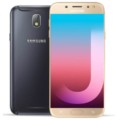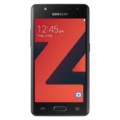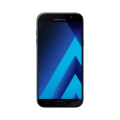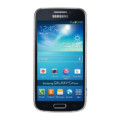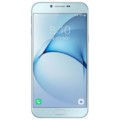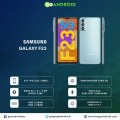Samsung Galaxy Xcover 4
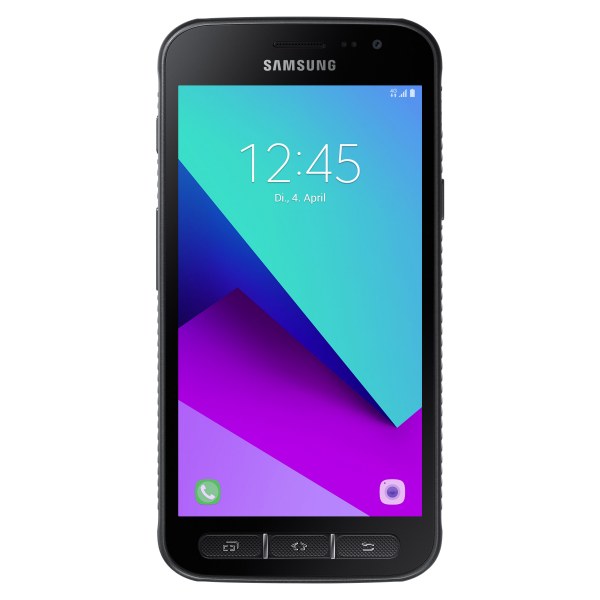

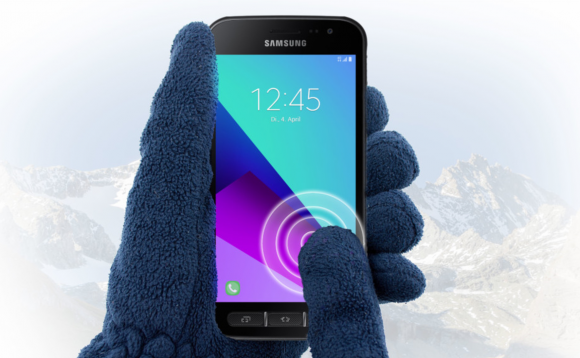
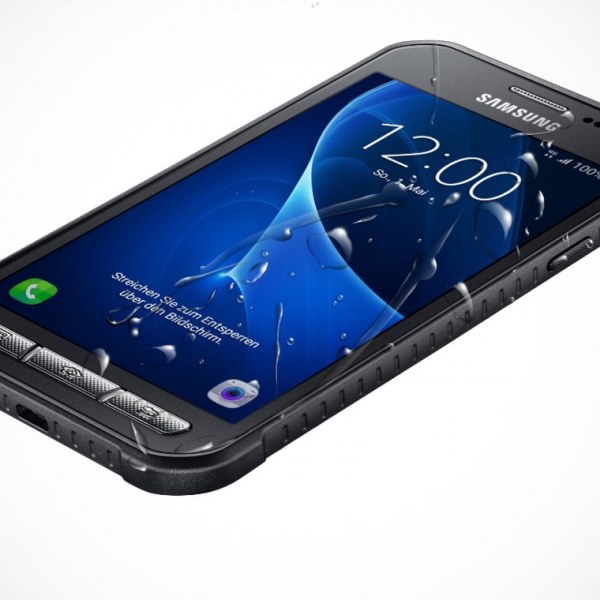
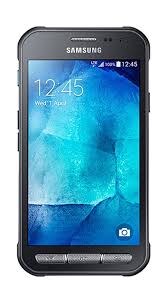
-
Processor: Quad-core 1.4 GHz
-
RAM: 2 GB RAM
-
Storage: 16 GB
-
Display: 5.0 inches
-
Camera: 13 MP/ 5 MP
-
OS: Android OS, v7.0 (Nougat)
Samsung launched its new rugged Galaxy Xcover 4. The phone have IP68 certified – dust/water proof over 1.5 meters and 30 minutes. It will available in Gray and black at a price of 259 Euro (₹18000, $270). There’s also a built-in “Glove Touch” mode, for using the handset while, er, wearing gloves.
Display and Design
The Samsung Galaxy Xcover 4 come with 5.0 inches IPS LCD capacitive touchscreen display. It has a display resolution of 720 x 1280 pixels with a pixel density of 294 ppi. It measures 146.2 x 73.3 x 9.7 mm (5.76 x 2.89 x 0.38 in) and a weight of 172 g (6.07 oz).
Hardware and Software
The Samsung Galaxy Xcover 4 runs on the Android OS, v7.0 (Nougat). It is powered by Quad-core 1.4 GHz processor. The phone has 2 GB of RAM. It packs with 16 GB of internal storage that can be expandable up to 256 GB via microSD card.
Camera and Battery
As far as are concerned, it packs 13 MP of rear camera and 5 MP of front camera for the selfies. The primary camera is capable of 1080p@30fps video recording. It includes Geo-tagging, touch focus, face detection, HDR, panorama, autofocus, LED flash. It consists of Li-Ion 2800 mAh battery.
Sensors and Connectivity
The smartphone is a Dual SIM device. Sensors on the phone have included:
- Accelerometer sensor
- Proximity sensor
- Compass sensor
Connectivity options are included:
- Wi-Fi 802.11 a/b/g/n, dual-band, WiFi Direct, hotspot
- Bluetooth- v4.2, A2DP, LE
- GPS with A-GPS, GLONASS
- NFC
- FM radio
- USB- microUSB v2.0
Samsung Galaxy Xcover 4 - Specs
Network
Design
-
Type Design Type called form factor refers to a mobile phone's size, shape, and style as well as the layout and position of major components of phone. There are three major form factors seen in mobile phones => bar phones, folding phones and sliding phones.Bar
-
Dimensions146.2 x 73.3 x 9.7 mm (5.76 x 2.89 x 0.38 in)
-
Weight172 g (6.07 oz)
-
WaterproofIP68 certified - dust/water proof over 1.5 meter and 30 minutes
-
ColorsGray and Black
Display
-
Display Type Display Technology => A number of display technologies and types used in mobile phones => TFT (Thin Film Transistor), IPS (In-Place Switching), OLED (Organic Light Emitting Diode), AMOLED (Active-Matrix Organic Light-Emitting Diode), Super AMOLED (an even advanced version of AMOLED), Resistive Touchscreen (Resistive touchscreens contain two layer of conductive material with a very small gap between them which acts as a resistance), Capacitive Touchsceen (Capacitive touchscreen technology consists of a layer of glass coated with a transparent conductor)IPS LCD capacitive touchscreen
-
Size5.0 inches
-
Resolution720 x 1280 pixels
-
Display Colors Display Colors is refers to the number of different shades of colors that the screen is capable of displaying => 64K colors, 256K colors and 16 million colors, Obviously 16M is highest available range of colors and better than others.16M
-
Pixel Density Pixel Density (PPI) is refers to the concentration of pixels on a particular display, measured in pixels per inch (ppi). Pixel density is calculated by dividing the diagonal pixel resolution of a display by its diagonal size, higher pixel density better display quality.~294 ppi
-
Touch ScreenYes, Multitouch
Software
-
Operating System OS => Every computer system run on a base software called Operating System (OS). Operating System controls all basic operations of the computer (such as smartphone, PDAs, tablet computers and other handheld devices). The Operating System allows the user to install and run third party applications (apps), apps are used to add new functionality to the device.Android OS, v7.0 (Nougat)
Hardware
-
CPU CPU (Central Processing Unit) mostly known as processors, CPU processes instructions in order to carry out certain functions that make your device operate properly. Processors are often described as the brain of computers, smartphones and tablets, Smartphones and tablets rely on processors to carry out their every task, Processors are an incredibly important factor in selecting any type of computing device, including your smartphone.Quad-core 1.4 GHz
-
RAM (Memory) RAM (Random Access Memory) is a type of computer memory that can be accessed randomly, any byte of memory can be accessed without touching the preceding bytes that allows information to be stored and accessed quickly from random locations. RAM is the most common type of memory found in computer systems, smartphones, tablets and other electronic devices.2 GB RAM
-
Internal Storage Internal Storage is a data storage space (flash memory) mostly used in smartphones, tablets and other electronic devices where operating system, apps, music, photos, videos, files and other user data Is stored.16 GB
-
Card Slot Memory Card Slot is a special slot for inserting a memory card. Memory cards allow you to expand the phone's built-in memory, A memory card (sometimes called a flash memory card or a storage card) is a small storage medium used to store data such as text, pictures, audio, and video, for use on small, portable or remote computing devices such as mobile phones, mp3 players, digital cameras.microSD, up to 256 GB
-
Sensors Sensors are electronic components that detects and responds to some type of input from the physical environment. The specific input could be light, heat, motion, moisture, pressure and location, The output is generally a signal that is converted to use in computing systems, a location sensor, such as a GPS receiver is able to detect current location of your electronic device.Accelerometer, proximity, compass
Camera
-
Primary Camera is able to capture photographs and usually videos, The most important characteristics of a camera are the resolution (measured in megapixels), lens focus type (fixed or automatic), higher megapixel cameras are known to capture higher quality photos, but not always a good measurement of the photos quality.13 MP, f/1.9
-
Video1080p@30fps
-
Camera FeaturesGeo-tagging, touch focus, face detection, HDR, panorama, autofocus, LED flash
Battery
-
Battery Type Battery Type => Cell phones run on various kinds of batteries depending on the manufacturer, phone size or shape and features. There are basically four types of cell phone batteries => Lithium Polymer, Lithium Ion, Nickel Metal Hydride and Nickel Cadmium.Li-Ion (Lithium Ion)
-
Capacity Battery Capacity is a measure (typically in Amp-hr) of the charge stored by the battery, and is determined by the mass of active material contained in the battery. The battery capacity represents the maximum amount of energy that can be extracted from the battery under certain conditions.2800 mAh
Connectivity
-
Bluetooth Bluetooth is a wireless communications technology for exchanging data between mobile phones, headsets, computers and other network devices over short distances without wires, Bluetooth technology was primarily designed to support simple wireless networking of personal consumer devices.v4.2, A2DP, LE
-
Wi-fi Wi-Fi is a popular wireless networking technology using radio waves to provide high-speed network connections that allows devices to communicate without cords or cables, Wi-Fi is increasingly becoming the preferred mode of internet connectivity all over the world.Wi-Fi 802.11 a/b/g/n, dual-band, WiFi Direct, hotspot
-
Infrared Infrared connectivity is an old wireless technology used to connect two electronic devices. It uses a beam of infrared light to transmit information and so requires direct line of sight and operates only at close range.
-
USBmicroUSB v2.0
-
GPS GPS The Global Positioning System is a satellite-based radio navigation system, GPS permits users to determine their position, velocity and the time 24 hours a day, in all weather, anywhere in the world, In order to locate your position, your device or GPS receiver must have a clear view of the sky.with A-GPS, GLONASS
-
NFC NFC (Near field communication) is a set of standards for smartphones and similar devices to establish peer-to-peer radio communications with each other by touching them together or bringing them into proximity, usually no more than a few inches.
-
Headphone Jack

